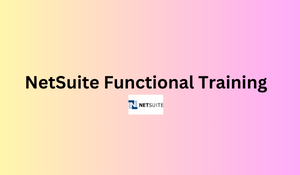What is OKTA?
Okta serves as a cloud-based identity management platform, facilitating secure and seamless access to a variety of applications and services. It provides features such as single sign-on, multi-factor authentication, and user lifecycle management, catering to the needs of organizations.
Can you explain the authentication and authorization processes in OKTA?
In Okta, authentication verifies users’ identities through methods like passwords or multi-factor authentication. Once authenticated, Okta’s authorization assigns specific permissions based on users’ roles, ensuring controlled access to resources. This two-step process enhances security by confirming identity and managing authorized actions within an organization’s systems.
How do you configure applications in OKTA for single sign-on (SSO)?
To configure applications for Single Sign-On (SSO) in Okta, administrators use the Okta Admin Console. They add the application, define SSO settings, and configure user attributes mapping, ensuring seamless authentication across integrated services for users.
Explain the significance of the OKTA Integration Network.
The Okta Integration Network (OIN) is a repository of pre-built integrations that streamline the adoption of various applications and services with Okta. It simplifies and accelerates the deployment of identity solutions, promoting interoperability and ensuring seamless access and security across a diverse range of technologies within organizations.
Describe the user provisioning and deprovisioning processes in OKTA.
In Okta, user provisioning automates the creation, modification, and deactivation of user accounts across integrated applications. It ensures consistent and secure user management, reducing manual efforts. Deprovisioning disables access and removes user privileges when necessary, maintaining security and compliance.
How can you automate user onboarding and offboarding using OKTA?
Okta automates user onboarding by provisioning accounts, assigning roles, and configuring access rights. For offboarding, Okta ensures timely deprovisioning, revoking access, and safeguarding sensitive data, streamlining the process.
Explain the concept of Just-In-Time (JIT) provisioning in OKTA.
Just-In-Time (JIT) provisioning in Okta dynamically creates user accounts in target applications upon their first login. It ensures immediate and automatic provisioning based on user attributes, reducing manual setup. This agile approach enhances efficiency, security, and user experience by providing instant access to necessary resources.
Discuss the different authentication methods supported by OKTA.
Okta supports various authentication methods, including password-based, multi-factor authentication (MFA), social authentication, and adaptive authentication. These diverse options enhance security by offering flexibility in choosing the most suitable and robust authentication mechanisms based on organizational needs.
How does Multi-Factor Authentication (MFA) work in OKTA?
Within the Okta system, Multi-Factor Authentication (MFA) enhances security by necessitating users to confirm their identity through multiple factors. These may include passwords, mobile push notifications, or one-time passcodes, adding an additional layer of verification during the login process.
Explain how to implement role-based access control (RBAC) in OKTA.
To implement Role-Based Access Control (RBAC) in Okta, administrators define roles with specific permissions. Users are assigned to these roles based on their responsibilities. Okta then enforces access policies, ensuring that users only have the permissions associated with their roles, enhancing security and data protection.
Can you describe the OKTA API and its use cases?
Okta API provides programmatic access to Okta’s identity management services. Use cases include user lifecycle management, authentication, and integration with third-party applications, allowing developers to customize and automate identity processes within their applications and workflows.
How would you use OKTA SDKs in application development?
In application development, Okta Software Development Kits (SDKs) are used to seamlessly integrate Okta’s identity and access management services. Developers leverage SDKs to implement authentication, authorization, and user management features, ensuring secure and user-friendly experiences within their applications while interacting with Okta’s platform programmatically.
Discuss the role of OAuth and OpenID Connect in OKTA API security.
OAuth and OpenID Connect play vital roles in Okta API security. OAuth facilitates secure, delegated access to resources, while OpenID Connect adds an authentication layer. Together, they ensure standardized and secure identity and access management for applications integrated with Okta.
How do you troubleshoot authentication issues in OKTA?
To troubleshoot authentication issues in Okta, administrators can use the Okta System Log to review user login events, examine application configurations, check user attributes, and analyze error messages to identify and resolve any issues affecting authentication processes.
Explain the role of OKTA support and community forums in resolving technical issues.
Okta support provides direct assistance to users, addressing technical issues through tickets and communication channels. Community forums offer a collaborative space for users to share experiences, solutions, and insights. Both resources contribute to a robust support ecosystem, facilitating effective issue resolution and knowledge exchange within the Okta user community.
Discuss the security best practices you would follow when implementing OKTA in an organization.
When implementing Okta, follow security best practices such as enabling multi-factor authentication, regularly reviewing and updating access policies, integrating with secure identity sources, monitoring system logs, and educating users on security awareness. These measures enhance overall security, protecting against unauthorized access and potential threats.
How do you ensure secure communication between applications and OKTA?
Secure communication between applications and Okta is ensured by implementing HTTPS, leveraging secure protocols like TLS/SSL. Additionally, utilizing Okta’s OAuth and OpenID Connect protocols for authentication and authorization enhances the overall security of data exchange between systems.
Discuss the customization options available for OKTA workflows
Okta workflows can be customized through the Workflows Designer, allowing administrators to create, modify, and automate various identity processes. Customization options include defining triggers, incorporating logic with decision elements, and integrating external actions. This flexibility ensures tailored workflows that meet specific organizational requirements and enhance overall efficiency in identity management.
How exactly does OKTA integration work?
Okta integration involves connecting Okta’s identity management platform with other applications and services. This is achieved by configuring settings, user attributes, and authentication methods to enable seamless access and security across integrated systems.
How can you add users in bulk in OKTA?
To add users in bulk in Okta, administrators can use the Import Wizard or Okta API. The Import Wizard allows uploading a CSV file with user details, while the API enables programmatic mass user creation.











